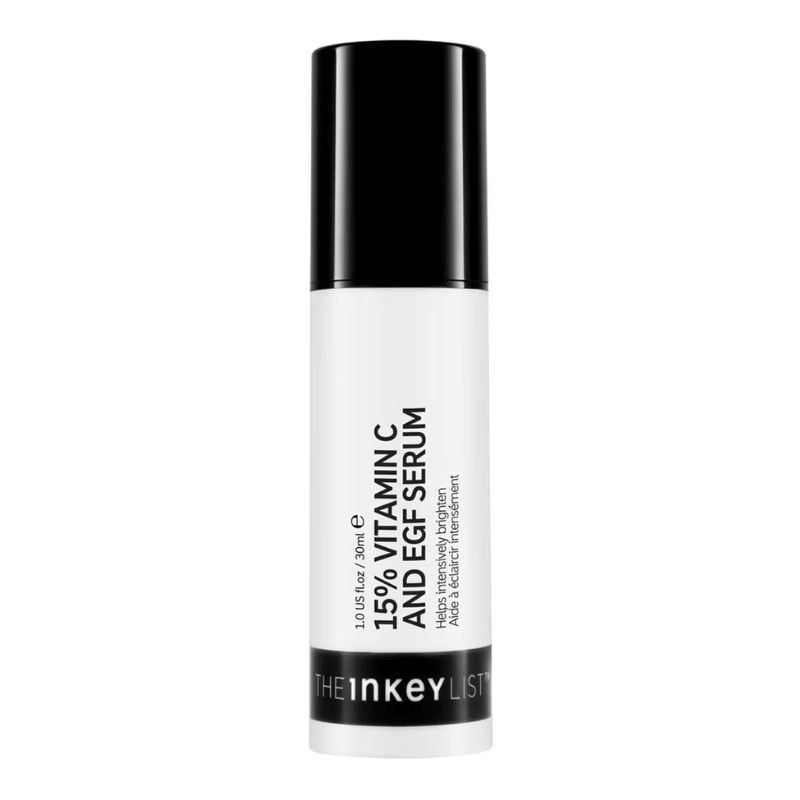EGF skincare is being hailed as the new retinol - but what is it, and how does it work?
Experts explain the latest buzzy ingredient in skincare: epidermal growth factors


EGF in skincare has been teetering on the edge of becoming the ‘next big thing’ for a while now.
Premium brands have been working with epidermal growth factors (EGF) for a long time, but the ingredient itself hasn’t quite hit mainstream skincare routines. There are a few reasons for that, which we will dive into in more detail later, but the basics are that it’s very expensive, potentially controversial, and isn’t currently backed by a huge amount of science - yet.
The limited evidence we do have, though, is pretty exciting. Epidermal growth factors promise impressive anti-ageing results, particularly in the best night serums, but without the potential for irritation that the gold standard best retinol creams bring. Younger-looking skin with no chance of flaking or redness? It would be rude not to find out more…
What are epidermal growth factors (EGF)?
“Epidermal growth factors (EGF) are a type of protein naturally present in the body that play a crucial role in skin health,” explains Dr Jennifer Owens, a GetHarley practitioner and aesthetics expert. “They are involved in processes like wound healing, collagen and elastin production, and cellular renewal – making them an important player in how our skin repairs and maintains itself.”
Sounds good, right? The problem is that the natural levels of epidermal growth factors dwindle with age, just like our stocks of collagen, elastin and hyaluronic acid. Being the bearer of bad news, consultant and dermatologist Professor Firas Al-Niaimi, advises that, “after our twenties, growth factor production declines rapidly, with a significant drop during menopause."
What can EGF do for our skin?
Cosmetic epidermal growth factors have been synthetically engineered to “mimic the body’s natural growth factors,” says Professor Al-Niaimi.
Once they have been applied to our complexions, Dr Tara Francis, a facial aesthetician, explains that EGFs, “bind to specific receptors on the surface of our skin cells, triggering a repair and regeneration response. This can improve cell turnover, collagen synthesis, and skin barrier repair.
Sign up to our free daily email for the latest royal and entertainment news, interesting opinion, expert advice on styling and beauty trends, and no-nonsense guides to the health and wellness questions you want answered.
When used consistently, EGF in skincare can improve skin texture and elasticity, minimise the appearance of fine lines and wrinkles, and promote a healthier, more luminous complexion.” Impressive stuff. As they’re so effective at helping the skin to heal, EGF is a particularly good ingredient to use after a treatment like laser or microneedling.
our favourite EGF serums to try

RRP: £229
Bioeffect is the market leader in the UK for EGF serums. Is it eye-wateringly expensive? Yes. Does it work? Absolutely. You can tell the difference in your skin immediately - it looks plump, healthy, and radiant, and the results only improve with every use.

RRP: £15
A budget option if you want to give growth factors a go without much commitment, alongside brightening Vitamin C. Keep in mind it is an extra in the formula, not the key ingredient.

RRP: £176
This clever serum combines growth factors with peptides to supercharge the benefits of both - for impressive firming and lifting results.
What is the controversy around EGF?
Unlike most skincare ingredients, epidermal growth factors are potentially controversial for three key reasons, which we asked Dr Sina Ghadiri, consultant dermatologist and founder of Sinaesthetics, to chat us through. The first concern, and it’s a big one, is “rooted in their ability to stimulate cell division, raising theoretical questions about whether they could promote tumour growth.” Ressuringly, Dr Ghadiri does say that “there is currently no clinical evidence to support this in topical use.”
The second concern is surrounding how EGFs are sourced. “Earlier formulations derived EGF from human foreskin fibroblasts, which raised ethical and cultural questions.” It’s clear to see why that would put people off. It’s no longer common practice, though, with “most modern products now using recombinant or biomimetic technology with plant or yeast-based sources.” Lots of complicated-sounding words there, but essentially, epidermal growth factors are mainly now made in labs.
The final concern is that there is “ongoing discussion about the true efficacy of EGF.” Unlike the best vitamin C serums or retinoids and retinol, which are backed by years of research and clinical data, the benefits of epidermal growth factors in skincare haven’t been widely studied yet. Something to keep in mind, especially as products that contain EGF tend to come with a very high price tag.
Who should be using epidermal growth factors?
Professor Al-Niaimi recommends epidermal growth factors for “those experiencing signs of ageing like fine lines, loss of firmness, dullness or thinning skin. It’s especially effective for mature skin. As EGF supports the skin’s natural renewal process, it’s also a great option for preventative care in younger skin, helping to maintain a healthy, hydrated, and glowing complexion.”
What is interesting about epidermal growth factors compared to other anti-ageing ingredients is that Dr Owens advises that those with “dry, inflamed or compromised skin may benefit the most. Especially anyone recovering from in-clinic treatments or experiencing barrier damage. It can help calm and support the skin’s natural healing processes, leading to a stronger, more even complexion.”
Is there anyone who should avoid EGF?
Due to the controversial elements we have already discussed, Dr Ghadiri suggests that “while generally well-tolerated, a theoretical caution would be for individuals with a history of certain cancers, particularly skin cancers, to avoid, due to the growth-promoting properties of EGF. Although evidence for harm from topical use is lacking,” he continues.
“Also be aware that a lot of EGF products have not been tested on women who are pregnant or breastfeeding, so in these cohorts the safest option would be to avoid use.” Pretty much all skincare products err on the side of caution when you’re expecting and recommend you consult with your doctor before using, so this isn’t a huge red flag.
We would also say that anyone who is on a tight budget and doesn’t want to splurge without being confident they will see results might want to avoid epidermal growth factors. As we have already established, there isn’t a huge amount of research so far for such an expensive product.
How can you tell if a product containing epidermal growth factors is any good?
It’s really hard as a consumer to decode the marketing jargon and decipher if a product is any good or not. Thankfully, we have the pros to help us. Consider these factors when shopping for an EGF serum…
- Transparent sourcing: To be confident of where the growth factors have come from, Dr Francis recommends looking out for “transparent sourcing”. “Synthetic or plant-based is preferable,” she adds.
- Percentages: “Look for products that include EGFs higher up in the INCI [ingredients] list, which suggests a meaningful concentration,” says Dr Ghariri.
- Clinical data: “Look at how much clinical data the brand can offer,” suggests Dr Owens. “This gives a clearer picture of how the product performs on real-world skin. Brands that specialise in this regenerative skincare are a safer bet than trend-led brands with less focused research.”
- Price: “Price alone isn’t always a guarantee, but very cheap EGF products are unlikely to contain effective concentrations or stable formulations,” Dr Francis explains. Clinical trials are expensive to carry out, so normally this will reassuringly bump up the price.
- What else is in the formula: EGF will work better if supported by other “complementary ingredients like hyaluronic acid for hydration and barrier support,” says Dr Francis.
Is EGF a good alternative to retinol?
“In my opinion, not quite – at least not yet,” cautions Dr Owens. “Retinoids still hold the strongest position in terms of long-term data and visible results. If your skin can tolerate them, I’d recommend sticking with a well-chosen retinoid.”
The caveat to this is if you have sensitive skin. “EGF isn’t a direct alternative to retinoids, but it can be a gentler option for those who can’t tolerate retinoids,” explains Dr Francis. “Retinoids actively speed up cell turnover and have more resurfacing effects, while EGFs support repair and regeneration.
For sensitive or compromised skin, EGF can be a good starting point or supportive ingredient alongside actives like retinol.” We won’t start throwing out our retinol anytime soon, then.
Jess Beech is an experienced fashion and beauty editor, with more than eight years experience in the publishing industry. She has written for woman&home, GoodtoKnow, Now, Woman, Woman’s Weekly, Woman’s Own and Chat, and is a former Deputy Fashion & Beauty Editor at Future PLC. A beauty obsessive, Jess has tried everything from cryotherapy to chemical peels (minus the Samantha in Sex and The City-worthy redness) and interviewed experts including Jo Malone and Trinny Woodall.
You must confirm your public display name before commenting
Please logout and then login again, you will then be prompted to enter your display name.
